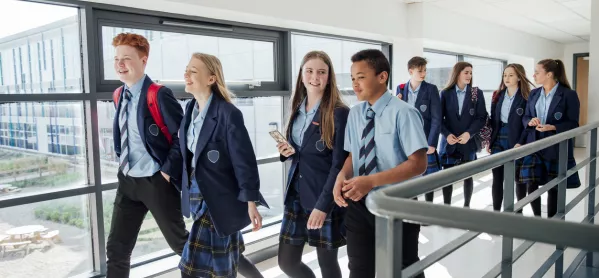Teachers have called on Gavin Willamson to consider introducing rotas for secondary schools and colleges in high-risk areas to attempt to curb an “alarming” rise in Covid cases.
Dr Mary Bousted and Kevin Courtney, joint general secretaries of the NEU teaching union, have written to the education secretary over concerns that the infection rate in secondary schools is now “17 times higher than it was on 1 September”.
They warn that if this trend continues and nothing is done to stop it, the “education system will be plunged into disarray”.
DfE: Rotas part of government’s worst-case scenario for schools
U-turn: Masks to be worn in high-risk secondary schools
Exclusive: Schools in high-risk areas not being put on rotas
Moving secondary schools to rotas is already part of the Department for Education’s “worst-case scenario” planning for managing the spread of Covid-19.
Rotas are part of the second tier of a system for reducing the risk of the coronavirus in schools.
However, Tes has revealed that even schools in high-risk and very high-risk areas for Covid are not being moved on to this tier.
Instead, schools in these areas are in tier one of the school system - meaning masks need to be worn in communal areas of secondary schools.
Now the NEU is calling on Mr Williamson to consider introducing rotas for secondary schools in these high-risk and very high-risk areas in the government’s triple-tier national system for Covid restrictions.
Dr Bousted said: “We now have a situation where the infection rate in secondary schools is 17 times higher than on 1 September.
“This is alarming and it is crucial that government looks at all potential measures to stabilise the situation including the possibility of a rota-based system for secondary schools and colleges as outlined in the government’s August guidelines.
“A rota system will ensure smaller class sizes making social distancing achievable. The strain on public transport in the mornings and afternoons will be less and the social mixing after school will also be reduced.
“Schools and colleges are already struggling to cope with current infection rates resulting in many students or whole-year bubbles being sent home to self-isolate.
“If this trend continues and nothing is put in place to try and reduce infection levels, our education system will be plunged into disarray.
“Our schools need a clear way forward that ensures education can continue in a planned and coherent way. No decisions will be easy, but to just keep ignoring the data and drifting into higher infection rates with the increased erratic closure of schools and colleges is not an option.
“We look forward to hearing from Gavin Williamson to discuss our proposals further.”
The NEU has also produced a document looking at the pros and cons of a rota system.




